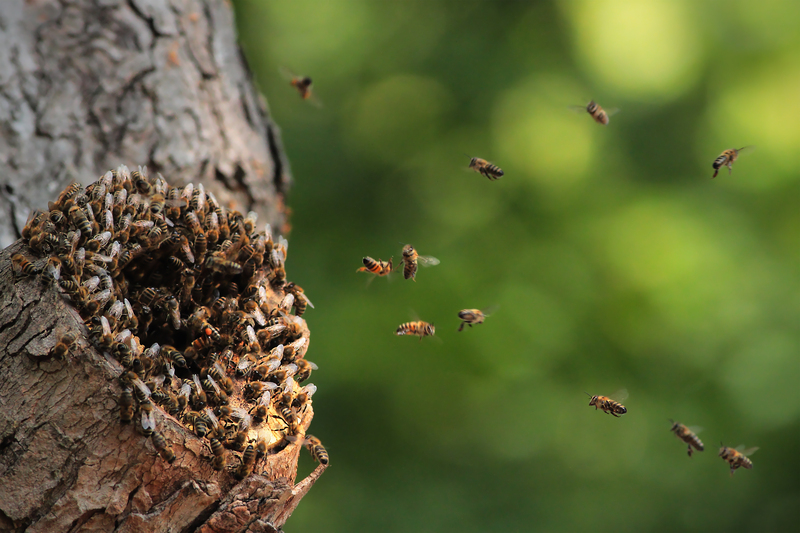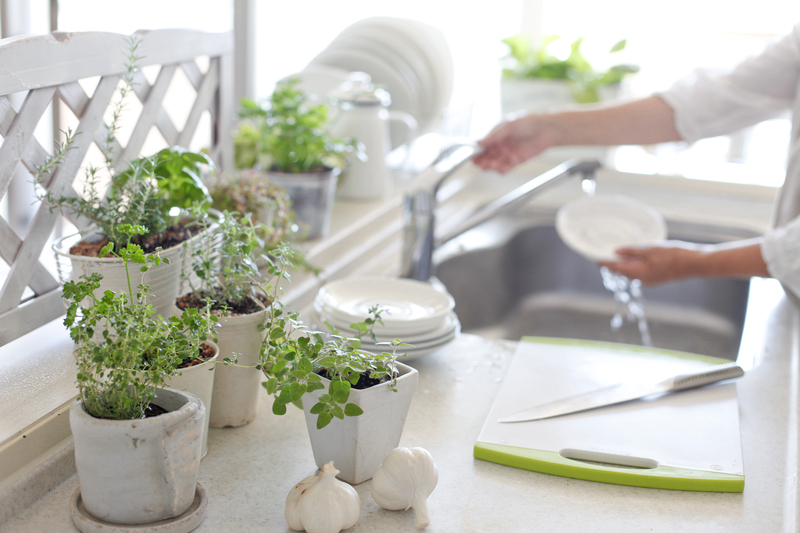Cultivating a Kid-Friendly and Safe Garden Retreat
Posted on 14/06/2025
Cultivating a Kid-Friendly and Safe Garden Retreat: The Ultimate Guide
Transforming your garden space into a haven where children can safely play, explore, and learn is not only possible but highly rewarding. A kid-friendly and safe garden retreat fosters creativity, encourages outdoor activity, and brings families together in a serene environment. In this comprehensive guide, discover how to cultivate an outdoor sanctuary that balances beauty, safety, and fun, creating lasting memories for your entire family.
Why Create a Kid-Friendly Garden Retreat?
- Promotes Health and Wellness: Spending time outdoors boosts children's physical health and emotional well-being.
- Encourages Creativity and Imagination: Natural environments stimulate curiosity and hands-on learning.
- Reduces Screen Time: An inviting garden draws children away from electronic devices and into nature.
- Builds Family Bonds: Gardening together fosters cooperation and lifelong skills.
*Designing a safe, kid-oriented outdoor space is an investment in your children's future happiness and health.*

Key Elements of a Safe and Kid-Friendly Garden
1. Secure, Accessible Layout
- Fencing: Choose secure fencing without sharp edges or protrusions. Gates should have childproof locks.
- Clear Boundaries: Define play zones and garden beds with visual markers like stones, hedges, or low fences.
- Paths and Surfaces: Install non-slip, even paths using materials like bark chips, grass, or rubber tiles to prevent falls.
2. Child-Safe Plant Choices
- Avoid Toxic Plants: Learn about common poisonous plants, such as oleander, foxglove, or lily-of-the-valley, and ensure they're not present in your garden retreat.
- Edible and Sensory Plants: Grow safe, edible plants children can taste--like cherry tomatoes, strawberries, or herbs. Introduce sensory plants like lavender, lamb's ear, or mint for tactile and olfactory exploration.
- Low-Allergen Options: Select plants that produce minimal pollen if your children have allergies.
3. Play Structures and Fun Features
- Age-Appropriate Equipment: Install slides, swings, or climbing frames suitable for your child's age and developmental stage.
- Natural Play Elements: Use logs, boulders, sandpits, or water features to provide endless ways for creative play.
- Shaded Areas: Include shade sails, pergolas, or tree canopies to protect kids from sun exposure.
4. Non-Toxic Materials
- Safe Construction: Opt for unfinished, untreated woods, eco-friendly stains, and paints free from harmful chemicals.
- Soft Landing Zones: Under play equipment, mulch, rubber, or grass helps cushion falls.
5. Safe Water Features
- Fountains and Ponds: Fenced or covered water features prevent accidental access; shallow streams or splash pads are safer alternatives.
- Storage: Safely stow hoses, tools, and chemicals away from curious hands, ideally in locked sheds.
Step-by-Step: Designing and Planting Your Kid-Friendly Garden Retreat
Step 1: Assess Your Space
Begin by evaluating your existing garden. Sketch a rough map, marking obstacles (like trees) and hazards (such as ponds or sheds). Identify sun and shade patterns, access points, and the areas children already gravitate toward. This assessment forms the blueprint for your kid-safe garden design.
Step 2: Plan For Zones
- Active Play Zone: Allocate ample space for running, games, and equipment like swings or a climbing wall.
- Quiet Retreat Zone: Create nooks with benches, pillows, or a hammock under a tree for reading and daydreaming.
- Gardening Area: Designate raised beds or a "secret garden" where kids can plant and tend flowers or veggies.
- Artistic Corner: Set up an outdoor chalkboard or craft station with water-based paints and non-toxic supplies.
*A well-zoned garden retreat maximizes safety while nurturing curiosity and development.*
Step 3: Select Safe, Engaging Plants
- For Color and Texture: Sunflowers, nasturtiums, snapdragons, and pansies are child-safe and visually appealing.
- For Edible Fun: Blueberries, peas, lettuce, and radishes offer quick returns and hands-on learning.
- For Sensory Play: Grasses, lavender, and lamb's ear are soft, fragrant, and pleasant to touch.
- Avoid: Nightshade family (tomato leaves, potato berries), daffodils, and yew, as some parts are toxic if ingested.
Step 4: Install Play Features with Safety in Mind
- Check All Equipment: Sand down wooden structures, tighten bolts, and ensure edges are rounded and splinter-free.
- Surface Preparation: Place a thick layer of mulch, bark, or rubber beneath swings and climbing frames.
- Supervision Zones: Arrange seating so you can comfortably observe kids at play.
Step 5: Add Child-Safe Water Fun
- Simple Splash Pads: Hose attachments or shallow, portable pools create water play without drowning hazard.
- Decorative Streams: Bubbling water features with minimal depth are fascinating for young children and deter risky play.
Step 6: Maintain and Evolve
- Regular Inspections: Frequently check for loose fixtures, broken toys, or plant overgrowth to maintain ongoing safety.
- Involve Children: Encourage your kids to help with gardening and cleaning, instilling lifelong respect for nature.
- Refresh and Renew: Swap out play equipment, plant new varieties, and add seasonal decorations to keep the space exciting.
Safety Tips for Cultivating a Kid-Safe Outdoor Sanctuary
- Supervise Young Children at All Times: No landscape design replaces active adult supervision, especially around water features.
- Store Chemicals and Tools Locked and Out of Sight: Only use organic pest control, and lock away sharp or dangerous tools.
- Teach, Don't Just Tell: Explain plant hazards and garden rules. Show children which plants are safe and which areas are off-limits.
- Sun Protection: Use shade and plant trees to protect sensitive skin. Apply sunscreen before outdoor play.
- Install Soft Edges: Avoid sharp stones or metal borders by opting for flexible plastic or shrub boundaries.
Garden Activities to Engage Children and Foster Learning
- Grow a Pizza Garden: Plant basil, tomatoes, oregano, and peppers, allowing children to help harvest and make their own pizza.
- Wildlife Watching: Add bird feeders, butterfly houses, or bug hotels to observe nature up close.
- DIY Fairy or Dinosaur Gardens: Let imagination run wild with miniature landscapes using tiny figures, pebbles, and moss.
- Composting Together: Teach sustainability by making compost bins part of your kid-friendly garden retreat.
- Seasonal Scavenger Hunts: Organize outdoor searches for plant leaves, rocks, or insects to spark curiosity about the natural world.

Benefits of a Child-Centric Garden Oasis
Children raised in safe, stimulating garden environments enjoy:
- Improved coordination and physical skills from outdoor play and gardening activities
- Deeper appreciation for nature and the cycles of life
- Enhanced mental health through peaceful contemplation and active play outside
- Family togetherness as you work, learn, and relax outdoors
Adapting Your Garden as Children Grow
- Update Play Spaces: Swap out toddler playsets for sand volleyball courts or tree forts as interests evolve.
- Expand Gardening Roles: Promote older kids to chief weed-puller, landscaper, or harvest chef, deepening their engagement.
- Encourage Autonomy: Provide each child a "plot" to design, grow, and care for as their own.
Final Thoughts on Creating a Kid-Friendly and Safe Garden Retreat
Every family's garden retreat will look different, reflecting unique spaces, ages, and interests. Yet, by prioritizing child-friendly, safe features, you'll provide your children with a magical place to play, grow, and thrive. Remember:
- Plan ahead--zones, plants, and play
- Prioritize safety--equipment, fence, supervision
- Engage the senses--colors, textures, scents
- Keep evolving--as your family grows
By following these steps, you'll cultivate a kid-friendly and safe garden retreat that enriches your children's lives and nurtures joyful outdoor family memories for years to come.
Frequently Asked Questions (FAQs)
-
What are the most important safety features in a kid-friendly garden?
Secure fencing, age-appropriate equipment with soft surfacing, non-toxic plants, shaded areas, and safe water management are essential. -
How can I make my garden engaging for kids of all ages?
Incorporate separate activity zones tailored to different interests (active play, gardening, crafts) and update features as children grow. -
Are there easy plants for young kids to grow?
Sunflowers, peas, radishes, strawberries, and marigolds are all forgiving, quick-growing, and safe for children to handle.
Cultivating a kid-friendly and safe garden retreat is more than landscaping; it's about nurturing your child's sense of adventure, responsibility, and wonder in a natural sanctuary crafted just for them.

